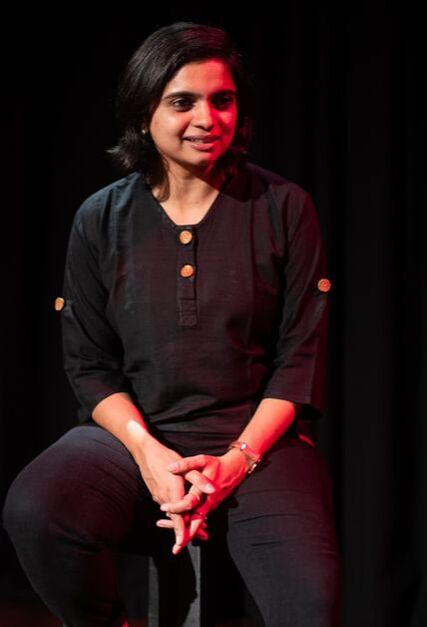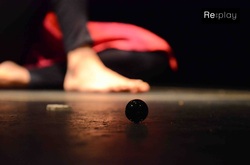 What is immersive theatre ? Immersive theatre is about experiencing a piece of theatre as opposed to just watching it. One can argue that watching something can also be an experience. Immersive theatre goes beyond that and seeks to engage multiple senses. This multi sensorial experience of immersive theatre immerses you in a new world, whose rules are slightly different. Through the process of immersion, you cease to become a passive spectator. The concepts of the traditional proscenium, the stage, that divides space between the performers and the audience no longer exists in such kind of work. A new relationship is sought between the performers and audience. Re:play is one such immersive performance with a dynamic relationship between the performers and the audience, the combination of which influences the performance. Through the duration of the performance, the audience will be challenged with simple, yet unique tasks that will shape the way they experience the performance. An element of play is involved, again with a set of rules that the audience will be grasp onto, through the performance.
0 Comments
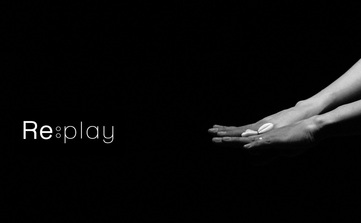 So what is Re:play? In a line, Re:play is a devised performance duet inspired by traditional Indian games. I have always been fascinated by traditional games and grew up playing many of these. A year ago, I came by an article in the paper about how we no longer play any of these games, given that most of us have moved on to become a part of the digital space. Suddenly, I started composing visuals in my head about how the different elements from traditional games could be composed into performance. I remember picking up a pen and scribbling out the patterns of these board games and how they can spatially be reconstructed in a performance context. This was the beginning. I spent over 3 months in the rehearsal studio in London working with collaborators who were dramaturgs, movement practitioners and performers, to explore the possibilities that these games lend themselves to. Given that we were dealing with games, an element of participation was a key consideration. Re:play asks of the audience a bit more than just being a passive spectator. This is what makes Re:play an immersive performance. A lot in the performance is based on chance happenings, so one may not be in control at all times, but one is in control of his/her experience through the performance. It was really exciting to discover how Traditional Indian games have been played in different contexts through time. Re:play is an experience of the sounds, rhythms, patterns, structures, colours and narratives that traditional Indian games lend themselves to. The performance also explores how these games and their elements are relevant to us by going through a journey that evokes themes of mythology, contemporary events, memory, Indian History as well as Indian folklore. Re:play premieres on the 19, 20 and 21 of September at the C. P. Ramaswami Aiyar Foundation(Alwarpet), followed by a public showcasing on the 28 and 29 of September at Spaces (Besant Nagar) in Chennai. Both performances are only on a registration basis, the details of which we will put up next week. The performance will also tour Bangalore and Hyderabad over October and November. Looking forward to Re:play times. 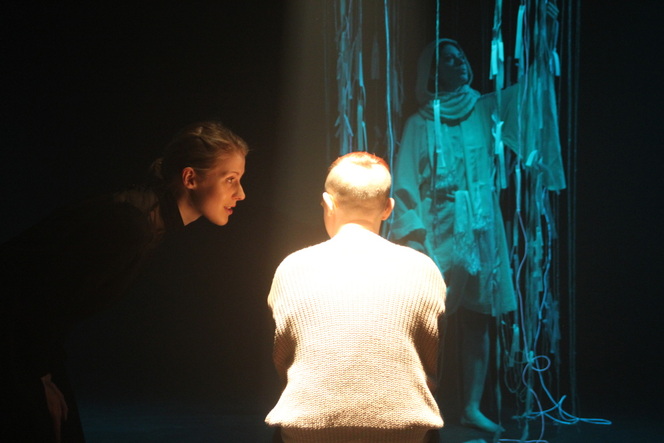 A shot from Gossamer - Creating co-presence Performance has always been an outcome of preparation. Traditionally, this preparation would involve rehearsal, where text was written and parts were rehearsed with the chorus, along with singing and dancing, staging dramatic text in its entirety. In the early nineteenth century, the introduction of the term mise en scène suggested that something is given physical appearance onstage that can otherwise only exist in the readers imagination. References to the term accumulated thereon and the meaning of the verb was 'to stage' and 'to transform into a stage performance'. At the turn of the last century, where literary text ceased to be the sole basis of performance, Edward Gordon Craig noted that "…the Art of the Theatre is neither acting nor the play, it is not scene nor dance, but it consists of all the elements of which these things are composed: action, which is the very spirit of acting; words, which are the body of the play; line and colour, which are at the very heart of the scene; rhythm, which is the very essence of dance" (Craig 1911: 138 in Fischer 2008: 185) This introduced the concept of performance being a collage of its smallest constitutive elements - action, words, line, colour, and rhythm. The staging of these elements was then a matter of choice exercised by the director and this would create the performance artwork. Jacques Copeau considers the text a pre existent 'mental' entity to be transformed into sensual presence through the process of mise en scène. He defines directing and staging as "the sum of the artistic and technical processes with whose help the work complied by an author as written text is transferred from its mental and hidden state of existence into the real and present state of theatre" (Copeau 1991: 341 in Fischer 2008: 186) The concept mise en scène has evolved over time. Fischer links the term to the idea of an event, its staging stimulating action, in a way that elements attract audience attention. "Spectators become aware that they are affected and transformed by their experience of the movements, light, colours, sound, odours and so forth. The mise en scène can therefore be defined and described as a process that aims at the reenchantment of the world and the metamorphosis of the performer's participants" (Fischer 2008: 189) The Gossamer Mise en scène In attempting to devise the mise en scène for Gossamer, careful consideration of the various elements of performance, their relationships with another, the space as well the audience members played a key role in the design of the performance. The challenge was to achieve an optimal balance between the elements, that would enable a physical, mental and emotional transformation for the audience. Given that Gossamer was a bespoke experience, based on the life of audience members themselves, with the mode of address being direct, the intimacy of the event and the creation of a unique atmosphere were careful considerations from the very beginning of the development process. With audience material sourced from social media as well as through friends and family, we adopted a method of converting text to gesture as one of the first aspects of the mise en scène. Anne Bogart in Viewpoints, addresses gesture as behavioural, those that belong to everyday life and expressive, those that express feeling, which is not otherwise directly manifest. "One could say that Behavioural Gestures are prosaic and Expressive Gestures are poetic" (Bogart 2005: 49) This was a key starting point in devising Gossamer. Content would be translated into gestures in the studio with supporting movements as well as sound-scapes and text to create the various parts of the mise en scène. Spatial Relationship as a view point induced the range of possible distances between the elements of performance. "The distance between things on stage, especially (1) one body to another; (2) one body (or bodies) to a group of bodies; (3) the body to the architecture." (Bogart 2005: 11) The placement of the audience member within the performance was therefore a critical aspect of the mise en scène. To further foster the intimacy in the environment, we designed distinct performing spaces within the space and placed the audience member in an intimate spatial proximity that would help performers make connections with the audience at various levels. The spatial relationship also motivated audience members to move around the space, interact with performers as well as experience the event in a way that they chose to. As a performer, it made me feel emotional connections with my audience member and their reception of the piece and reactions to it constantly influenced my performance in Gossamer, enabling the feedback loop between the audience and me, in turn triggering my spontaneity during the performance. Consideration of atmosphere The mood and the atmosphere that the performance space would set was also an important element of the mise en scène. According to Gernot Boehme, "atmospheres constitute the spectators' first sensation on entering the auditorium and enable a very specific experience of spatiality" (Boehme in Fischer 2008: 115) As a part of the aural mise en scène, the audience on arrival into the space were welcomed by a piece of music that was special to them in some way. This was complemented by visual elements such as the blue light and the EL wires (Electro Luminescent wires) that created an atmosphere that was magical, enchanting and welcoming at the same time. I was particularly keen on creating powerful visuals in the performance through gesture, movement and lighting. Through the devising process, I realised the possibilities that may unfold, when the audience member also becomes a part of the mise en scène in a way that a shared space is created. Co-Presence in Gossamer "[The] original meaning of theatre refers to its conception as social play - A game in which everyone is a player - actors and spectators alike… The spectators are involved as co-players. In this sense the audience is the creator of the theatre. So many different participants constitute the theatrical event that its social nature cannot be lost. Theatre always produces a social community." (Hermann 1981: 19) Max Hermann understood and propagated the bodily co-presence of actors and spectators to constitute performance. "For performance to occur, actors and spectators must assemble to interact in a specific place for a specific period of time" (Hermann in Fischer 2008: 32) If the relationship between the audience and the performer has to shift from traditional passive spectatorship to being an active part of the performance, can the construct of the mise en scène enable this new relationship? Max Hermann mentions that "The audience's physical participation is set in motion through synaesthetic perception shaped not only by sight and sound, but by physical sensations of the entire body." (Hermann in Fischer 2008: 36) Staging proceeds the insight that the bodily co-presence is required to generate the performance. Any definition of mise en scène has to take that into consideration (Fischer 2008: 187) The mise en scène of Gossamer integrated the audience as well as the space into the performance, enabling the bodily co presence of the performer and the audience. This intimate co-presence induces new connections that performers are able to make with the audience members, powerful enough to move them, shake them or even shock them. This co-presence escalates to an emotional level as well, when the performance is about the audience members themselves, which means that the performance will not happened if not for them. The performance material comes from the audience which is then processed into various elements of the mise en scène and presented in an environment of intimacy, creating a shared space, co presence and human connection at every level. This connection also induced physical contact during the performance, when an audience member held my hand and I kissed it- a moment of transformation was experienced. There were also moments of interaction, verbal gestures and immediate reactions from audience members through the performance that highlighted the co-presence and at the same time kept the environment of intimacy and connection. In a way, Gossamer made me understand my audience members better at multiple levels, who outside the performance space, are my good friends and colleagues. In the event of bodily co presence inducing physical contact , the element of liminality generates transformation. "The spectators remain on the threshold for the duration of the performance. Their position is never fixed. They do not control the performance, but their influence can be felt nevertheless. The audience constantly oscillates between these various states, ultimately enabled, defined and triggered by the bodily co-presence of the actor and the spectator" (Fischer 2008: 67) The Gossamer mise en scène was carefully designed and constructed to enable the bodily co presence, yet the way it would unfold with every experience being unique in itself, was to be realised through the process of the performance. Hermann states that in spite of clever and empirically effective staging strategies, the success of mise en scène ultimately cannot be planned; it is to be seen as an emergent phenomenon. (Hermann in Fischer 2008: 189) Bogart adds to this by saying "You cannot create results; you can only create the conditions in which something might happen" (Bogart 2001: 124) Gossamer's mise en scène created the conditions that enabled the bodily co-presence of the actor and the spectator, which then led to transformation at various levels for all involved, inducing a mise en scène of co-presence. Through the process of Gossamer, I have become interested in exploring the concept of co-presence that can be achieved at various levels, through mise en scène. A performance is designed with the consideration of multiple elements, the coming together of which will shape the performance and the experience of it for audience members as well as for performers.. The element of immersion and therefore the creation of shared space, changes the way the performance is received, processed and experienced. I am also keen on exploring the concept of aural mise en scène and if through aurality, co-presence can be created. With a focus on creating work through gesture, sound and movement, I am interested in a mise en scène that will liberate, transform and induce new possibilities of experiencing performance. "The performance is possible and gains a new sense of purpose only because of the audience" 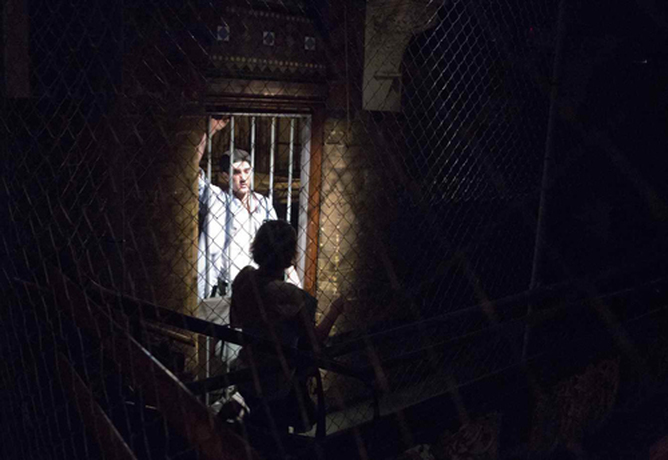 Re-creating the Shawshank experience - Photo by Creativesocialblog Immersive or participatory theatre is about designing your performance with active participation from the audience. The audiences' presence makes the play possible. Their actions give the play a new sense of purpose. A fortnight ago, I had the opportunity to be part of a re-creation of 'Shawshank Redemption', as part of London's Secret Cinema venture. This simply meant that I was a prisoner in Shawshank. I dressed like one and ate like one and was definitely treated that way too. The experience was questioning in many ways about how I truly felt through the experience and after its conclusion. We were asked to come dressed in formals, and wear our long johns under our clothes. I was sent for trial, where I was convicted of kidnap and sentenced to 8 years in prison. A prison bus drove us from one location to an abandoned school a few miles away. As soon as we got down, we were mocked at, guards yelled at us in their firm tones, commanding us and treating us like dirt. However, you know that everything you are going through is an act and you know for sure that you are safe. It's that willing suspension of disbelief that makes it or breaks it for you. At this juncture in life, I don't think I will ever be convicted for kidnap in reality. This was my chance to live a second life, though you may not really want to. We were sent into a common hallway, where we changed and everything was administered in a strict drill sort of fashion. We were led to our bunks, where prisoners also offered to sneak in beer and other eatables. Dinner followed, where we were given steel plates and served food in a rather harsh manner. A whole spoon full of baked beans was shoved into my mouth, against my liking. (I am allergic to baked beans, but the guards dint care) The atmosphere set was scary, strict and violent.Well, that's how jails are, at least from what we know of it from the movies we see. We were taken to recreation rooms, where I sketched and also made wax candles. Of course I was inducted into the library, where the jail warden pushed out books from all rows and it was my job to rearrange the whole bit. I did have my revenge. I stole the warden's shoes, as it happens in the movie ! We were then taken to the medical room and asked to consume some pills. The nurses at the counter refused to tell us what the pill was and almost forced us to take it. I took the pill, but did not swallow it and spat it out as soon as I left the room. At that precise moment, I felt like I was really a prisoner, breaking the rules and being sneaky. It was a realization of another sort. Was I really feeling violated and manipulated at that moment? Was my life really in someone else's hands? Was I really in jail ? Do I ever want to be in jail and be put through such treatment ? I also broke the rules, where I disobeyed the guards and created chaos. I was literally pushing boundaries and testing their patience. I know that if it were all real, I'd maybe be shot down by now, but it was rather interesting to see and feel the tension of the environment and be part of it. We also got to watch Shawshank Redemption at the end of it, to top it all. Plenty of beer was served and we were finally released into the real world ! |
Archives
March 2020
Categories
All
|
